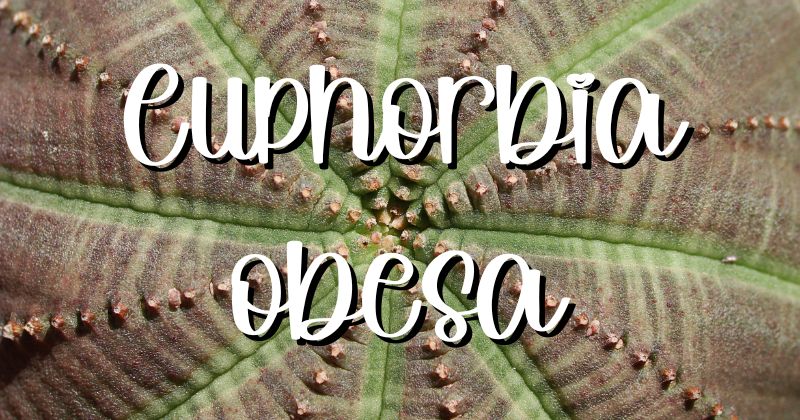Have you ever seen a plant and thought, “Wow, that looks just like a baseball!”? Well, that’s exactly what the Euphorbia obesa, commonly known as the Baseball Plant, looks like! This unique succulent is native to South Africa and is part of the Euphorbiaceae family. The Baseball Plant is a popular choice among succulent enthusiasts because of its distinctive shape and low maintenance needs. In this comprehensive guide, we’ll explore everything you need to know to properly care for your Euphorbia obesa.
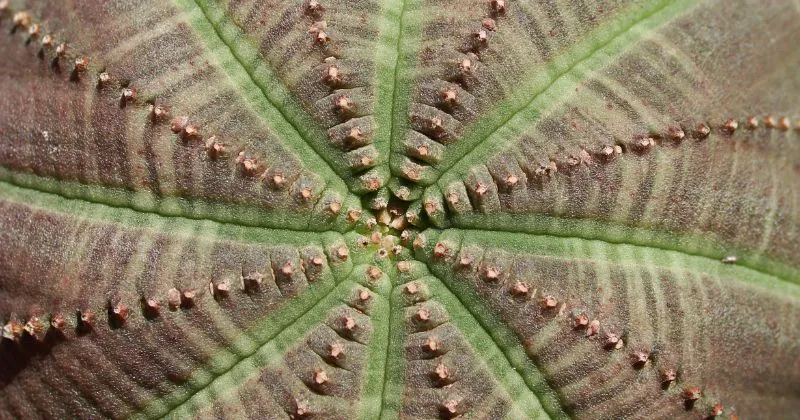
Euphorbia obesa Care Guide:
Characteristics of Euphorbia obesa ‘Baseball Plant’
Shape and Appearance
The most notable feature of the Euphorbia obesa ‘Baseball Plant’ is its shape, which closely resembles a baseball. Its smooth, green surface is marked with eight vertical stripes, and it has a round or slightly elongated form. This succulent is also known as the living baseball plant due to its uncanny resemblance.
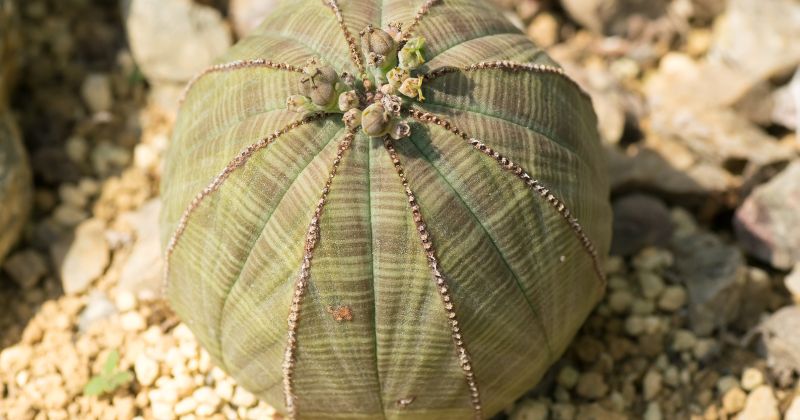
Size and Growth Rate
‘Baseball Plant’ is a slow-growing succulent that can reach up to 6 inches (15 cm) in height and 4 inches (10 cm) in diameter. It may take several years to reach its full size, but the wait is worth it for the unique aesthetic it provides.
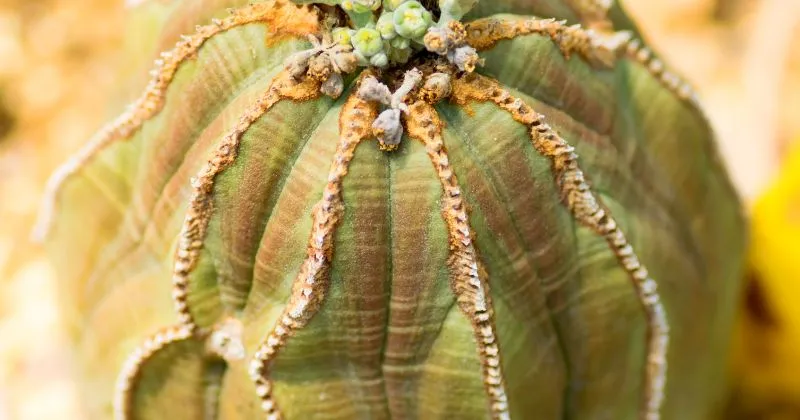
Male and Female Euphorbia obesa ‘Baseball Plant’
Euphorbia obesa ‘Baseball Plant’ is either male or female. Only the female plants produce seeds and baby plants. It can take several years before you know if a plant is male or female.
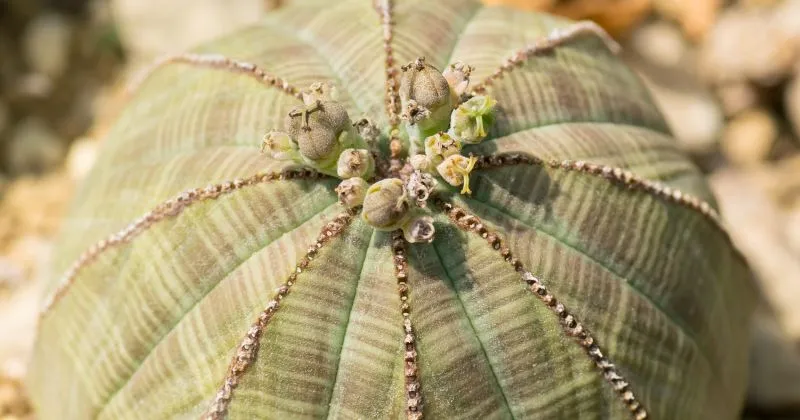
As Euphorbia obesa ‘Baseball Plants’ get older, the differences between males and females become more obvious:
• Females tend to be rounder and fuller, while males tend to be taller and skinnier.
• Female stems and cyathia (the flower-like parts) tend to be bigger than in males.
• Cyathia on female plants will grow into seed pods after pollination. On males, the cyathia just fall off after releasing pollen.
• You’ll see yellow pollen coming from the cyathia of male plants, but not females.
• Inside the cyathia, female plants have a large three-pronged stigma (the female part). Males have many stamens (the male part) around a small stigma.
If you want female Euphorbia obesa ‘Baseball Plant’ to produce seeds, keep males away during flowering. Or, pollinate the females yourself using pollen from a male plant you choose.
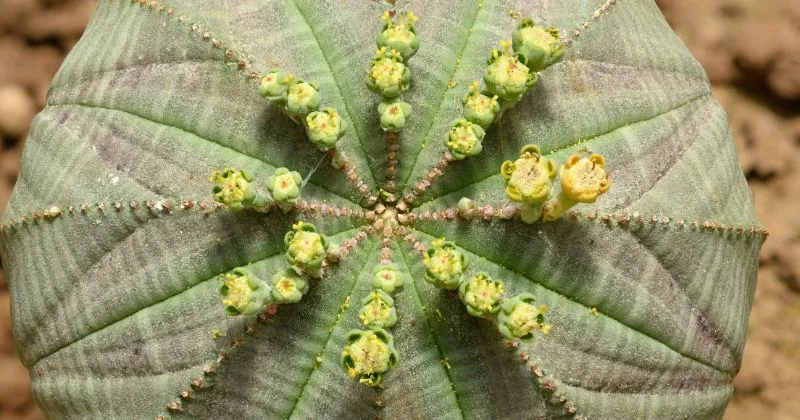
Look for a rounder shape, bigger size, seed pods, lack of pollen, and a large three-pronged stigma inside the cyathia—these are signs you have a female ‘Baseball Plant’! Keeping males away will help ensure your female produces seeds.
Proper Care for Euphorbia obesa ‘Baseball Plant’
Sunlight Requirements
Euphorbia obesa requires plenty of sunlight to thrive. Place your ‘Baseball Plant’ in a location that receives at least 4-6 hours of direct sunlight each day. Be cautious, though, as too much intense sunlight can cause sunburn on the plant’s delicate surface.
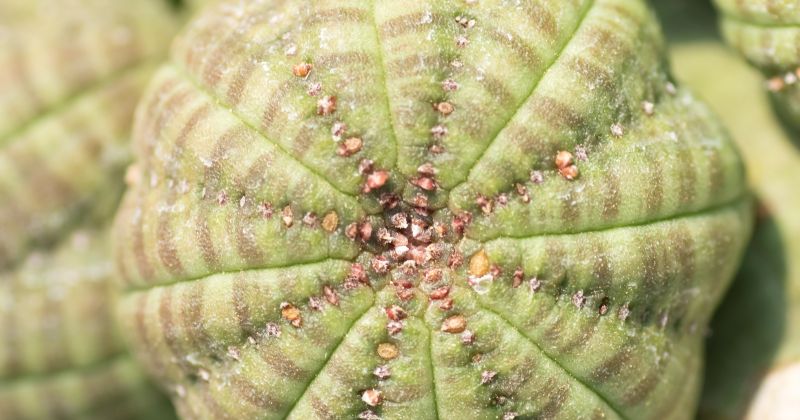
Watering Needs
Like most succulents, the Euphorbia obesa is drought-tolerant and prefers to be kept on the dry side. Water your ‘Baseball Plant’ sparingly, allowing the soil to dry out completely between waterings. Overwatering can lead to root rot and other issues, so it’s better to err on the side of caution.
I have definitely killed one or two of mine probably from overwatering.
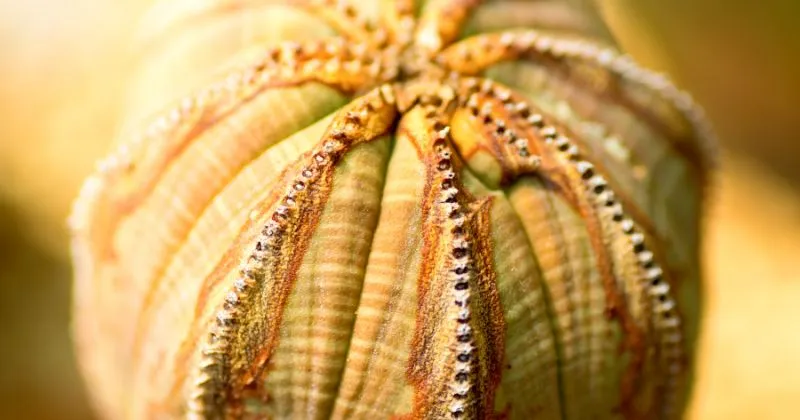
Soil and Drainage
Euphorbia obesa thrives in well-draining soil. A mixture of cactus and succulent soil with added perlite or coarse sand is ideal. Proper drainage is crucial to prevent excess moisture from causing root rot or other complications.
Temperature and Humidity
‘Baseball Plant’ is adapted to arid environments and can tolerate temperatures between 50-85°F (10-29°C). It is not frost-tolerant, so be sure to protect your ‘Baseball Plant’ from freezing temperatures. Additionally, the ‘Baseball Plant’ does not require high humidity and can be sensitive to overly damp conditions.
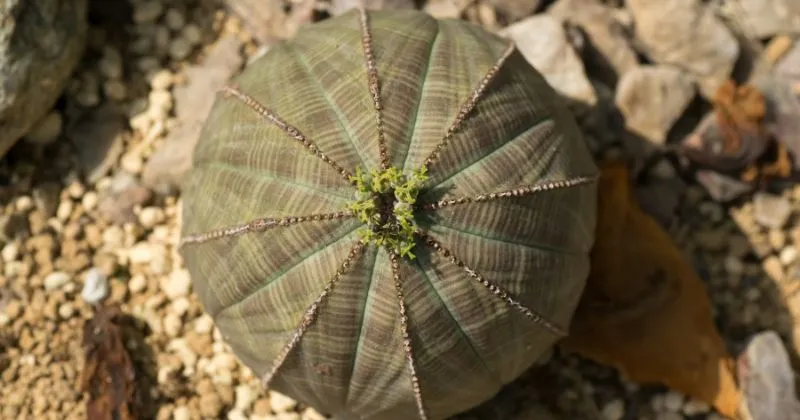
Fertilizer
‘Baseball Plant’ does not require frequent fertilization. Apply a balanced, water-soluble fertilizer diluted to half strength once or twice during the growing season (spring and summer) to support healthy growth.
Propagation of Euphorbia obesa ‘Baseball Plant’
Growing From Seeds
To propagate ‘Baseball Plant’ from seeds, you’ll need a mix of male and female plants to produce viable seeds. When the female plant’s flower is pollinated by the male plant, it will produce a seed pod. Harvest the seeds once the pod dries and opens, then sow them in well-draining soil. Keep the soil slightly moist and place the container in a warm, bright location. Euphorbia obesa ‘Baseball Plant’ seedlings should emerge within a few weeks.
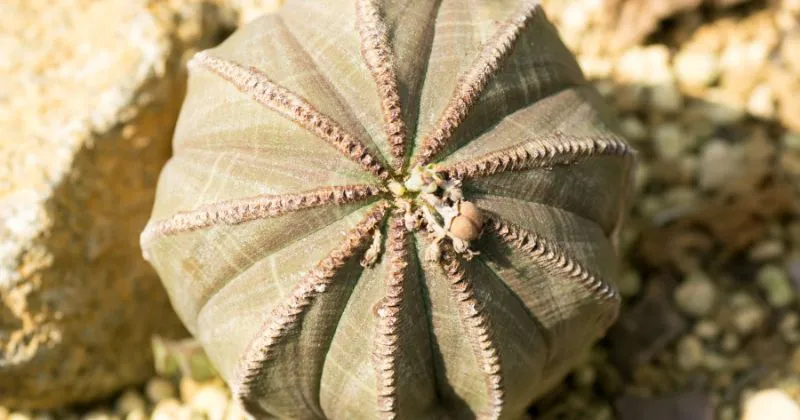
Growing From Cuttings
Propagating Euphorbia obesa ‘Baseball Plant’ from cuttings can be a bit trickier, as the sap of the plant is toxic and can cause skin irritation. When taking a cutting, be sure to wear gloves and protect your eyes. Allow the cutting to callus for a few days before planting it in well-draining soil. Water sparingly until roots begin to form, then gradually increase the watering frequency.
Common Pests and Diseases
‘Baseball Plant’, like other succulents, can be susceptible to pests like mealybugs and spider mites. Keep an eye out for any signs of infestation and treat promptly with insecticidal soap or neem oil. Proper care, including avoiding overwatering and maintaining good air circulation, can help prevent pest problems and diseases.
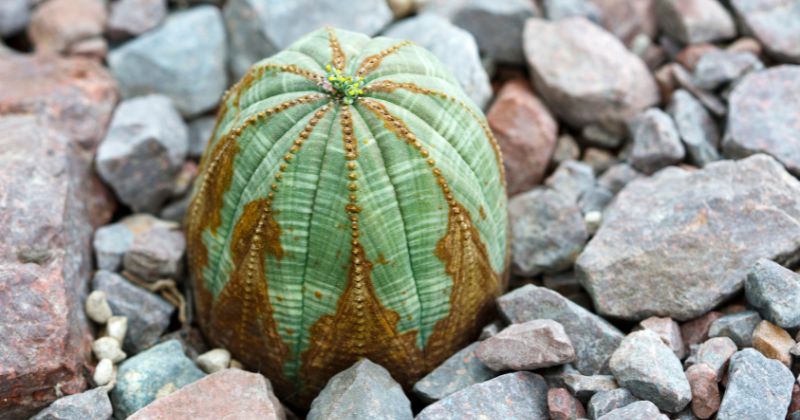
Where to Buy Euphorbia obesa ‘Baseball Plant’
You can find Euphorbia obesa ‘Baseball Plant’ for sale on Etsy by clicking on the image below!
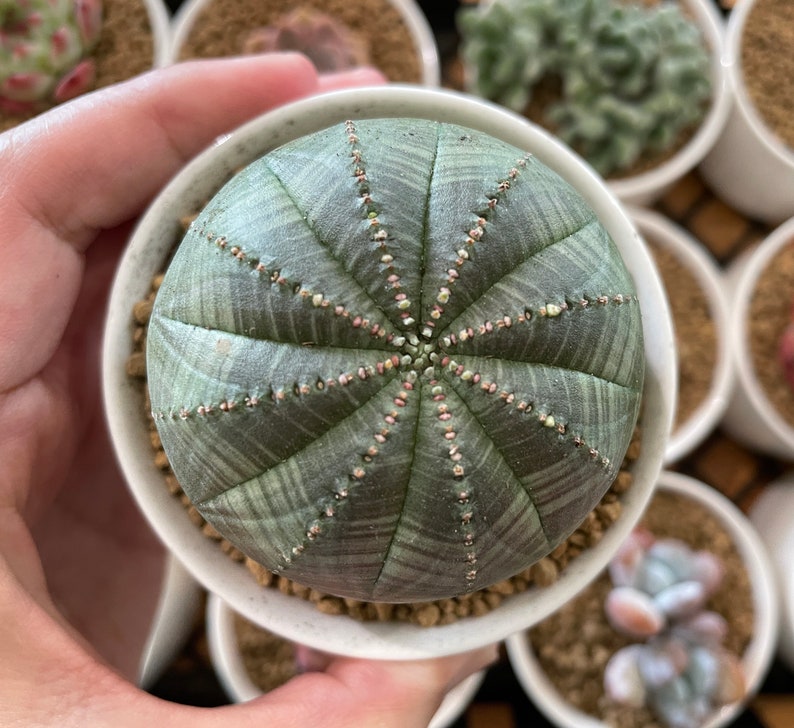
The Euphorbia obesa, or ‘Baseball Plant’, is a truly unique and charming succulent that can be a fantastic addition to your collection. With proper care, attention to its specific needs, and a bit of patience, you can enjoy watching your Baseball Plant thrive for years to come.
FAQs
1. Can ‘Baseball Plant’ tolerate frost?
No, Euphorbia obesa is not frost-tolerant. Protect your plant from freezing temperatures.
2. Is the sap of ‘Baseball Plant’ toxic?
Yes, the sap of Euphorbia obesa is toxic and can cause skin irritation. Wear gloves and protect your eyes when handling the plant, especially during propagation.

Where to Buy Succulents Online

